Saw that too! Very very awe inspiring plans!
World's first lagoon power plants unveiled in UKBy Roger Harrabin
BBC environment analyst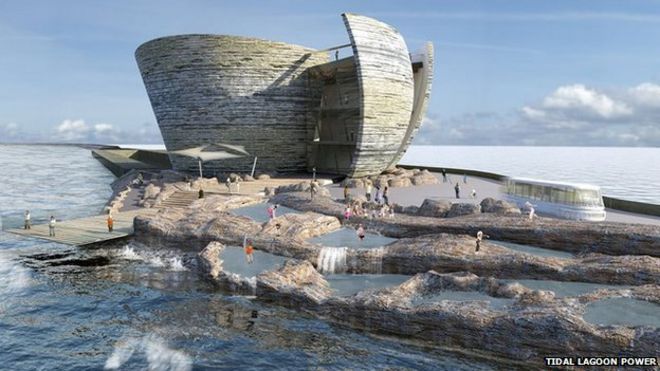 The proposed Tidal Lagoon Swansea Bay project would be the world's first man-made, energy-generating lagoonPlans to generate electricity from the world's first series of tidal lagoons have been unveiled in the UK.
The proposed Tidal Lagoon Swansea Bay project would be the world's first man-made, energy-generating lagoonPlans to generate electricity from the world's first series of tidal lagoons have been unveiled in the UK.The six lagoons - four in Wales and one each in Somerset and Cumbria - will capture incoming and outgoing tides behind giant sea walls, and use the weight of the water to power turbines.
A £1bn Swansea scheme, said to be able to produce energy for 155,000 homes, is already in the planning system.
Energy Secretary Ed Davey says he wants to back the project.
The cost of generating power from the Swansea project will be very high, but the firm behind the plan says subsequent lagoons will be able to produce electricity much more cheaply.
It says the series of six lagoons could generate 8% of the UK's electricity for an investment of £30bn.
As well as Swansea, the proposed lagoon sites are Cardiff, Newport, and Colwyn Bay in Wales; Bridgwater in Somerset; and West Cumbria.
Each will require engineering on a grand scale. In Swansea, the sea wall to contain the new lagoon will stretch more than five miles and reach more than two miles out to sea.
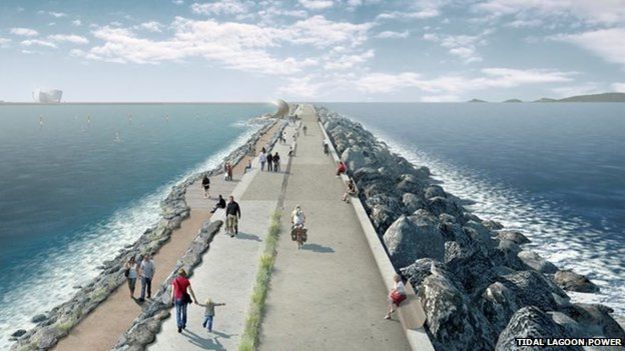 Some anglers fears the lagoon might affect migrating fish, but planners say the new sea wall would act as a reef
Some anglers fears the lagoon might affect migrating fish, but planners say the new sea wall would act as a reef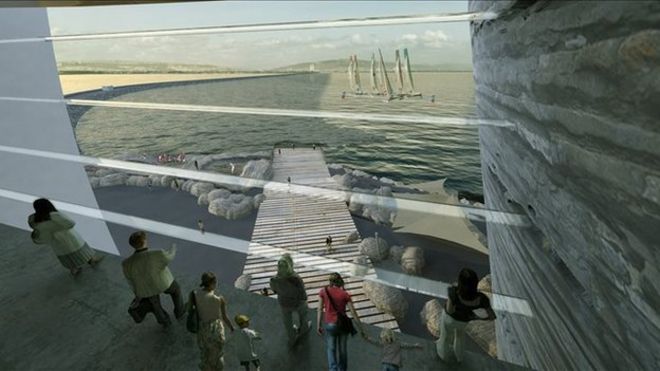 The firm proposing the lagoon say they want it to become a venue for culture and sports
The firm proposing the lagoon say they want it to become a venue for culture and sportsThe cost would be funded by electricity bill-payers under the existing government scheme to promote home-grown, low-carbon energy.
Tidal Lagoon Power is in negotiations with the government over how much it can charge for its power.
It wants £168 per MWh hour for electricity in Swansea, reducing to £90-£95 per MWh for power from a second, more efficient lagoon in Cardiff.
'Energy dance'The £90 figure compares favourably with the £92.50 price for power from the planned Hinkley nuclear station, especially as the lagoon is designed to last 120 years - at a much lower risk than nuclear.
Mr Davey told BBC News: "I can't make a decision on this yet because discussions are ongoing. But I'm very excited by the prospect of tidal power.
"We have got some of the biggest tidal ranges in the world and it would be really useful if we could harness some of that clean energy."
How does tidal lagoon power work?The lagoons operate a system similar to a lock gate to alter the water level either side of a sea wall.
When the tide starts to rise, gates in the wall are closed and water builds up outside the lagoon.
When the tide is full outside the lagoon, the gates are opened and water rushes past the turbines to fill up the lagoon.
When the tide turns to go out, the gates are shut to hold the water inside the lagoon.
As low tide is reached outside the wall, the gates are opened to generate power again as water flows through from the raised water level in the lagoon.
------------------------------------------------
Power firms also like the idea of lagoons-energy because, unlike power from the sun and wind, it is predictable.
Turbines capture energy from two incoming and two outgoing tides a day, and are expected to be active for an average of 14 hours a day.
Mark Shorrock, CEO of Tidal Lagoon Power, told BBC News: "We have a wonderful opportunity to create energy from the dance between the moon and the earth.
"It is admittedly rather expensive to begin with but as time goes on and the capital costs are paid off it becomes incredibly cheap."
Environmental concernsA previous plan for a barrage on the River Severn to create tidal power was scuttled after environmentalists protested it would prevent the daily exposure of mud flats vital for wading birds.
The Swansea lagoon plan is more widely accepted as it does not impede estuaries and allows the tides to flow as normal - albeit delaying each tide inside the lagoon for a few hours.
Gareth Clubb, Director of Friends of the Earth Cymru, said the group is broadly in favour of the Swansea lagoon.
"It's not unqualified approval - we want to make sure that the environmental impact can be managed," he said.
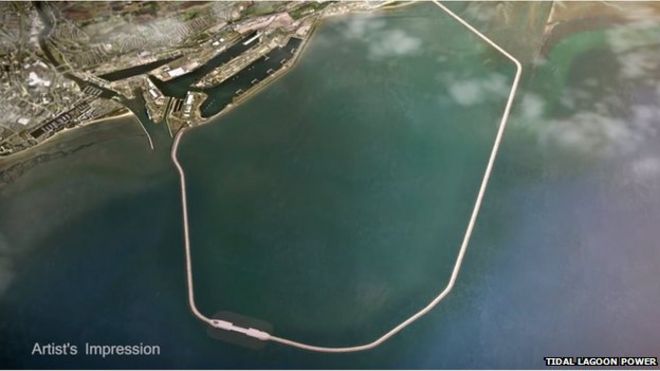 In Swansea, the lagoon wall will stretch more than five miles and reach more than two miles out to sea
In Swansea, the lagoon wall will stretch more than five miles and reach more than two miles out to sea"But if it helps us to close Aberthaw power station - one of the most polluting in the world - it'll be a good thing."
Anglers, though, fear the impact of the lagoon on fish migrating to spawn in local rivers which are only recently recovering from generations of pollution.
Phil Jones, who fishes on the River Tawe, said the plan had not been questioned "loud enough or widely enough".
"We would very strongly oppose any plans for this and other lagoons down the South Wales coast," he said.
The firm agrees some migrating fish will stray into the turbines, but project the numbers will be tiny, and that the new sea wall will benefit fish by creating its own reef habitat.
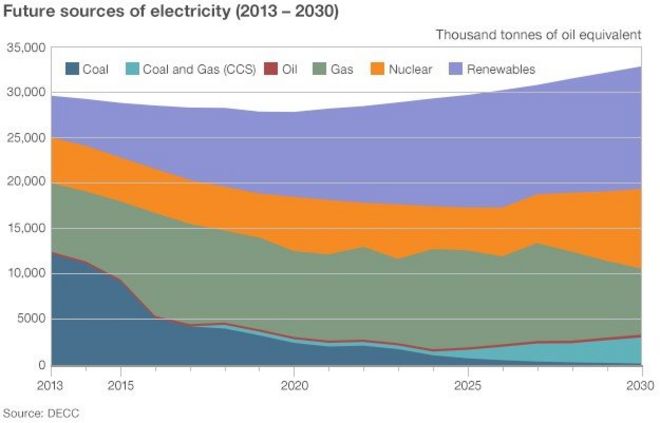 http://m.bbc.co.uk/news/science-environment-31682529
http://m.bbc.co.uk/news/science-environment-31682529


